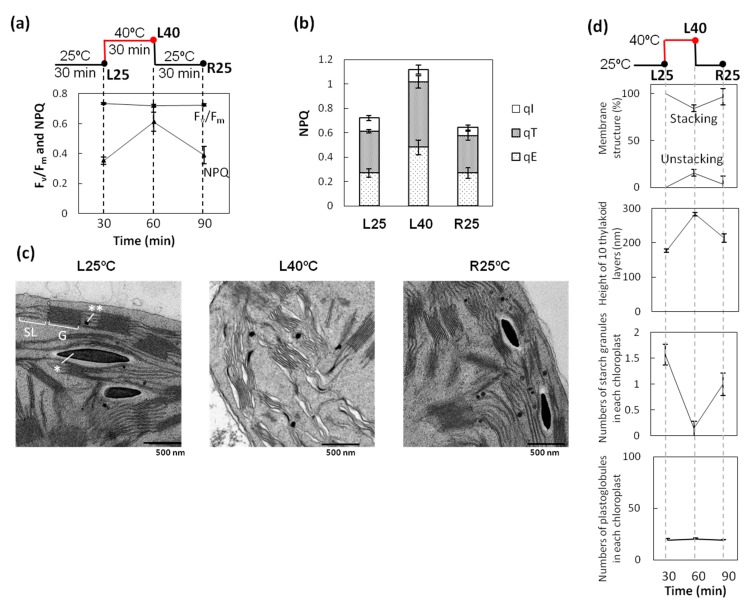Figure 1.
Heat treatment in light induced increase of NPQ (non-photochemical quenching) and unstacking of thylakoid membrane. (a) PSII (Photosystem II) maximum quantum efficiency (Fv/Fm). One-week-old wheat seedlings were heat-stressed under light (100 μmol photons m−2·s−1; L40). L40 wheat recovered at 25 °C was used as R25. Non-heat-stressed wheat was used as the control L25 plant. Actinic light (AL), 190 µmol photons m−2·s−1. Error bars indicate ± standard errors (SEs) (n = 3); (b) Non-photochemical quenching (NPQ), qE, qT, and qI of each sample. AL, 820 µmol photons m−2·s−1; (c) Electron micrographs of wheat leaves: left panel, control plant; middle panel, plant heat-stressed in light (100 µmol photons m−2·s−1); right panel, plant recovered in light from heat stress at 25 °C. Single and double asterisks indicate a starch granule and a plastoglobule, respectively. SL, stroma lamellae. G, Grana. Bars = 500 nm; and (d) Graphs: top panel, percentage of stacked and unstacked isolated wheat thylakoid membranes. (n = 3); Upper middle panel, height of 10 thylakoid layers (nm); Lower middle panel, starch granules in a chloroplast; bottom panel, numbers of plastoglobules in each chloroplast. Error bars indicate ± SEs (n = 50). Note that L40 chloroplasts altered thylakoid membranes but not those of L25 and R25.

